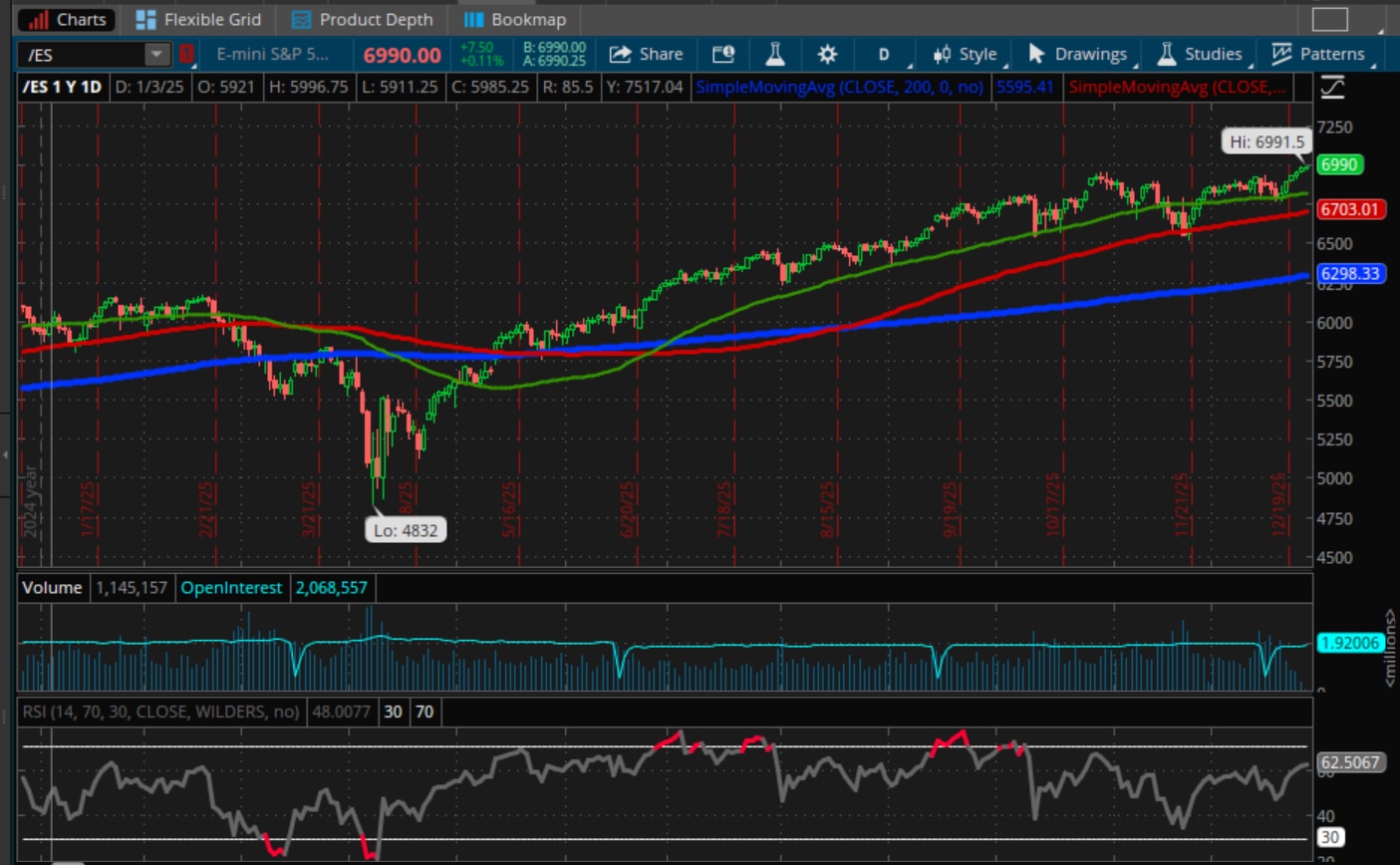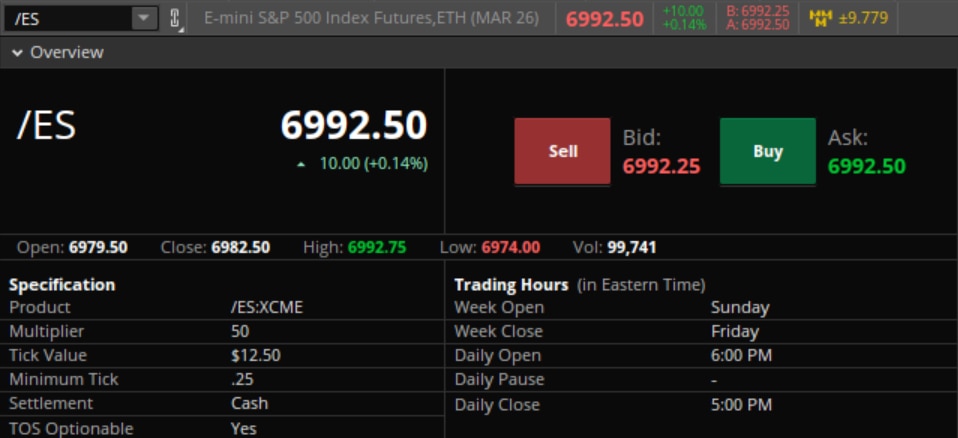Looking to the Futures
Santa Claus rally in full effect as S&P futures edge higher

From a statistical perspective, the S&P has finished higher during the Santa Claus period (which can be defined as the last five trading days in December and first two trading days in January) 77% of the time going back to 1928 when it started to be tracked. We received a boost from economic data as initial jobless claims fell by 10,000 to 214,000 earlier this week. Coupled with the U.S. adding 64,000 jobs in November we have strung together a slew of positive economic data.
As the major indices have pushed higher, we have noticed lower liquidity and volatility this past week. Although data suggests the Santa Claus rally is happening less frequently in recent years, when it does happen there is a significant correlation of positive returns the following year. Since 2000, we have had seventeen positive yearly returns during the Santa Claus rally period and twelve of those have been accompanied by positive returns on the S&P 500 the following year. Of those twelve years, only one of them was not in double digits, suggesting this period as a leading indicator for next year’s sentiment.
An important piece to the Santa Claus rally is the first two days in January. Yale Hirsh created the January Barometer which is another leading indicator for S&P performance based on the returns of the first month of the year. Roughly 86% of the time we see the yearly returns of the S&P remain positive if the month of January is positive.
Analysts expect S&P 500 earnings to grow around 15% for the year next year, which is up from the 12% expectation this year and significantly higher than the 8.6% historical average. The S&P is boasting a P/E ratio (Price to earnings) of roughly 31 which is historically higher than its long-term average. Going into next year the median view for the Fed is to cut one time to 25 basis points. Inflation is still above the Fed’s long-term 2 percent target and shifts in the labor market have suggested cooling but nothing to cause concern per Fed Chairman Jerome Powell.
Next week we have a light economic calendar with the December Fed Minutes from the most recent FOMC (Federal Open Market Committee) meeting published on the 30th and then another initial jobless claim posting on the 31st.
Technicals
Looking at the E-mini S&P 500 future for March (/ESH26) we’ve observed six green days in a row. During that time trading volume for the contracts has fallen significantly as we get through the holidays. Open interest remained relatively flat on the contract, signifying that positional exposure remains relatively constant. According to the most recent CFTC Commitment of Trader’s Report published December 16th, Asset managers remain significantly long the futures contract at 1.17 million while leveraged funds are taking the other side at 595,952 contracts short. The E-mini S&P 500 future is trading higher than all three SMAs (Simple Moving Averages) on a 50, 100, and 200-period timeframe signifying a strong bullish trend.

Contract Specifications

Economic Calendar
Monday December 29th
10:00 AM Pending Home Sales
Tuesday December 30th
2:00 PM Fed Minutes December FOMC Meeting
Wednesday December 31st
8:30 AM Initial Jobless Claims
New Products
New futures products are available to trade with a futures-approved account on all thinkorswim platforms:
- Ripple (/XRP)
- Micro Ripple (/MXP)
- Micro Corn (/MZC)
- Micro Wheat (/MZW)
- Micro Soybean (/MZS)
- Micro Soybean Oil Futures (/MZL)
- Micro Soybean Meal Futures (/MZM)
- 1 OZ Gold (/1OZ)
- Solana (/SOL)
- Micro Solana (/MSL)
Visit the Schwab.com Futures Markets page to explore the wide variety of futures contracts available for trading through Charles Schwab Futures and Forex LLC.